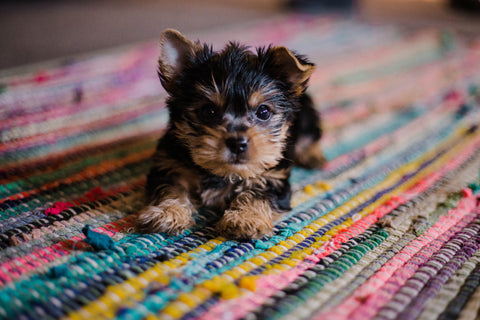Advice about getting your first puppy or dog

We have recently brought home a puppy! Our first pet, Oscar, is 14 years old this year and we realized it is time to bring home our second dog when Oscar is still healthy. Over the years, we have friends come to us and consult our opinions on all types of pets related questions. Most asked questions are from the new pet owner, “which breed I should get?” and “what is the new puppy checklist?”
Most people do not have an idea of how much cost and time involved in having a dog. As a responsible pet owner, we recommend starting with doing a simple online quiz. It will guide you through the decision making process and expectation you should have.
All animals at the animal shelter are in need of a second chance. They have been lost, given up or abandoned. You are giving them a new life in a loving home. Each year, it is estimated that more than one million adoptable dogs and cats are euthanized in the United States. Too many pets come into shelters and too few people consider adoption when looking for a pet. It not only costs you less (Usually first vaccinations are included) but the shelter pet project makes adoption procedures easy. There are numerous reasons to adopt a pet.
It is helpful to get an understanding of what kind of dog breeds are available in the market, which breed would be perfect for your home size, are they suitable for childrens, your noise tolerance, etc. We found a helpful selector here to find your perfect dog. You can also compare breeds here with a side-by-side comparison.
Make sure to visit a veterinarian no matter whether you are buying from a shop/ a shelter. It is important to have your dog’s medical and vaccination history.
The following is an example of a vaccination schedule that could be a good starting point for many dogs from PetMD website.
|
Age |
Vaccinations |
|
7 weeks |
DA2PP If needed: Intranasal Bordetella (kennel cough) |
|
10 weeks |
DA2PP If needed: Lyme disease, leptospirosis |
|
13 weeks |
DA2PP If needed: Lyme disease, leptospirosis |
|
16 weeks |
DA2PP, rabies |
|
1 year later |
DA2PP, rabies If needed: Bordetella, Lyme disease, leptospirosis |
- Pet food and set a meal schedule according to your pet size
- Stationed food and water bowls so your pet knows where to go when they are hungry and thirsty
- A recovery collar for use for post surgery care
- A travel crate/case and sleeping bed for pets serve as their new home
- Brushes and combs to keep your pets clean and tidy
- Dog shampoo and toothbrush
- Safe chewy toys to ease teething
- Nail clippers
- Dog Treats
- Fencing if you think it is necessary
- Establish a daily routine. Designate a potty area and repeat the same route or practices everyday. Be sure to take your pet to this spot each time he potties.
- Make your puppy familiar with his crate and sleeping bed. Put chewy toys and treats to attract your pet attention and enhance the comfort level.
- Observe and interact with your puppy while he is adapting to the new place. Avoid huge crowds and noises during his first week of stay.
Things to be aware of:
- Feed your puppy a formula designed for puppies. They need nutritious, highly digestible food.
- Be alert for signs that your puppy will need to urinate immediately. A young puppy has no bladder control that they might need to relieve themselves frequently.
- Be aware of where your puppy is. They are new to a place and might not be familiar with dangerous places like the kitchen or bathroom. They might also get themselves stuck in some dusty areas.
- Introduce a new dog to your dog with caution. Be sure to pick up toys that are your current dog’s favorite items to prevent rivalry. You might want to separate them into different crates for the first few weeks. Be sure to provide the same amount of attention to your dogs.
